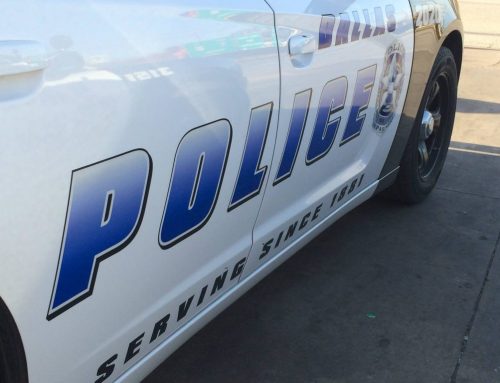Whether it was 50 years ago or five, many East Dallas neighbors served overseas in the military. Their service delivered them to new corners of the world, introduced them to unfamiliar cultures and people and taught them about brother- and sisterhood. From scouts to medics to commanders, each has a story to tell — or 12.
Colby Smith
U.S. Army
Iraq
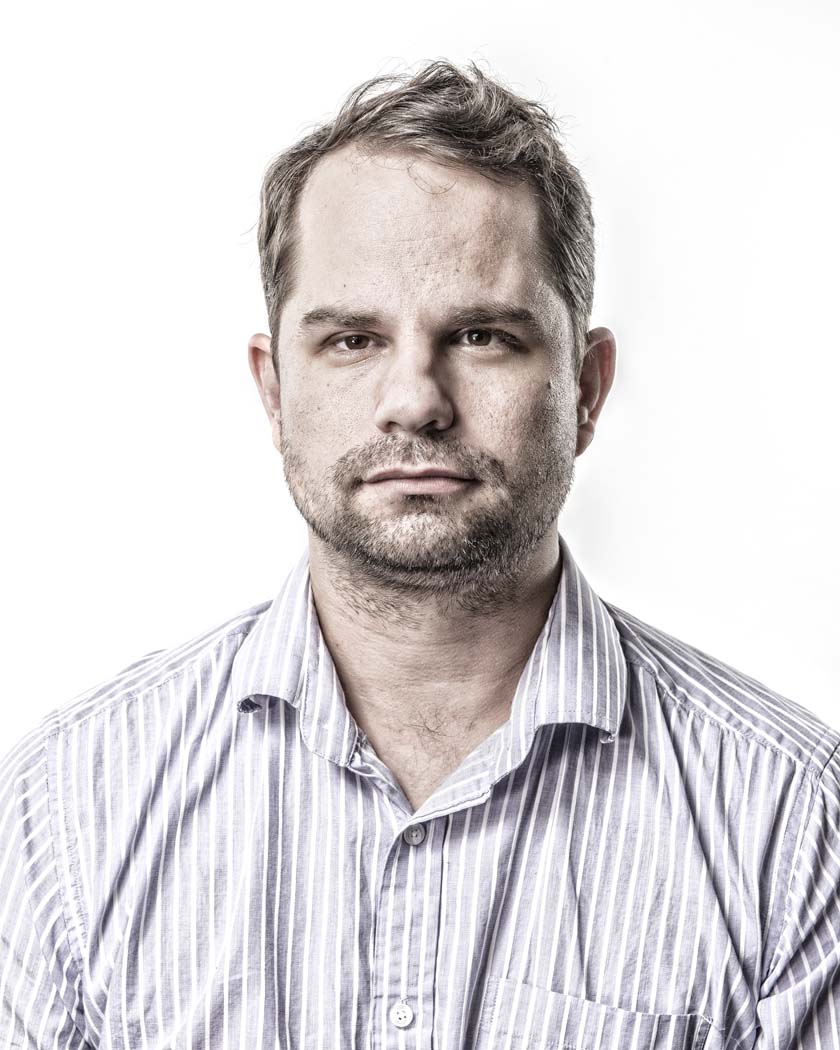
East Dallas resident Colby Smith poses for a portrait at the Advocate Magazine photo studio in Dallas, TX on Sept. 29, 2015. Smith served as a combat medic and cavalry scout in the US Army in Afghanistan and Iraq. In the latter theater, he was awarded for valor after saving fellow soldiers during an insurgent ambush in the Sunni Triangle. Photo by Danny Fulgencio
Even though neighbor Colby Smith graduated from the Riverside Military Academy in Georgia, he had no intention of enlisting in the military after high school. He had a scholarship to Baylor, where he was going to study pre-med.
He was a senior in high school on Sept. 11, 2001, and in its wake, many young Americans were inspired to join the “War on Terror,” as President George W. Bush dubbed it. Smith was one of them.
“Nine-eleven happened and I got really angry,” he says. “My goal was to join, help out and get out. It was never going to be a career.”
In 2003, he joined the Army and scored exceptionally high on the aptitude test, so the recruiter told him he could do basically whatever he wanted in the military.
“I said, ‘Great. I want a job where no one tells me what to do,’” Smith recalls. “[The recruiter] said, ‘You understand you’re joining the Army, right?’”
But after years in the military academy, that’s what Smith wanted. The recruiter told him, “You know who no one messes with? Their medic.” So that’s exactly what Smith did.
He went to basic training in Fort Knox before heading to the San Antonio at the Fort Sam Houston Military Medical Training Center. He was stationed at Brooke Army Medical Center in San Antonio in the pulmonary unit and burn unit. As the Iraq War gained momentum, Smith worked, trained and studied hard.
In 2005 he deployed to Iraq and immediately stationed at the Forward Operating Base, Saint Michael’s, in the “Triangle of Death,” a Sunni Muslim-dominated region south of Baghdad that saw heavy combat. It was night when Smith arrived on base, which prevented him from surveying the landscape until the sun came up.
“The next morning, that prayer comes on,” Smith remembers. “I went outside and leaned against the barrier and thought, ‘This is so beautiful.’ Right when it ends, tracer fire and explosions everywhere. I ran under my cot and thought, ‘Where in the hell are we?’ It was just insanity. They put us right into the hell.”
For his action in combat, he was awarded a Commendation with a “V” Device (for valor), a medal just under the Bronze Star.
He was on a scouting mission in a Humvee and dozed off in the back during the drive. Suddenly he woke up to a massive explosion behind them that was so powerful, it pushed the vehicle forward.
“That never happens,” Smith explains. “The vehicle doesn’t just lift off the ground like that. I was like, ‘What the…?’ but I’d been asleep.”
The Humvee behind them was hit hard and rolled.
When he got to the overturned Humvee, he saw the gunner’s arm had been cut off when the vehicle rolled. Their commander was thrown from the vehicle and landed on his face and chest, and the driver had broken both of his arms.
Smith began by making a tourniquet for the man who lost his arm. Then he saw the commander’s face was crushed in, which was making it hard for him to breathe, so Smith adjusted the broken pieces of the man’s face to open up his airways. Suddenly Smith felt a hand on the back of his head, and it pushed him down. It was the lieutenant.
“He asked me, ‘What are you doing?’” Smith recalls. “I was like, ‘Um, my job?’ And he said, ‘You’ve been getting shot at this whole time.’ I had no idea. I don’t remember being shot at.”
Despite the severe trauma, all three men lived, and Smith remains friends with them today. It was his first taste of war.
A few months into his deployment, the United States leadership shifted its mentality.
“It really started to click with Washington,” Smith explains. “They started to figure out that it was much better to bring pain on those who were trying to hurt us, but to also bring a lot of aid to those who weren’t trying to hurt us, and that was a new mission plan.”
He’ll never forget when he helped oversee the first democratic election in Iraq, he says.
“We wanted this election to go off, but we also knew Al-Qaeda wanted a moral victory, so they would slaughter anyone who went to go vote,” Smith explains. “So we shut down traffic, and 83 percent of the country voted.”
Not long after the election, he earned his second award for valor when he aided a nearby mosque after it was bombed.
He and a buddy showed up at the gruesome and chaotic scene after they saw smoke from miles away. There were no doctors or emergency personnel there to assist the men, women and children who were badly injured. Smith was the only medic on scene, and people rushed to him for aid. He franticly made bandages out of whatever he could find, including his own clothes. “These people were so desperate for something,” he remembers. “Every time I looked up, I saw a wound.”
It was the moment Smith changed the way he viewed his service in Iraq, he says. “My work at the mosque taught me these people were normal and scared and just trying to deal with life as much as we were,” he says.
When Smith and his unit moved south to Scania, Iraq, they opened a burn unit.
“In Iraq they didn’t have central heating or cooling, so they’d build these massive fires in their living rooms,” Smith says. He learned that falling into such fires was a leading cause of death for children in Iraq, so the clinic filled a critical need. Although they didn’t have all the supplies they needed, including morphine, they made an impact.
“I wanted to try my best to make their lives easier,” he says.
Inez Sookma
U.S. Air Force
Afghanistan
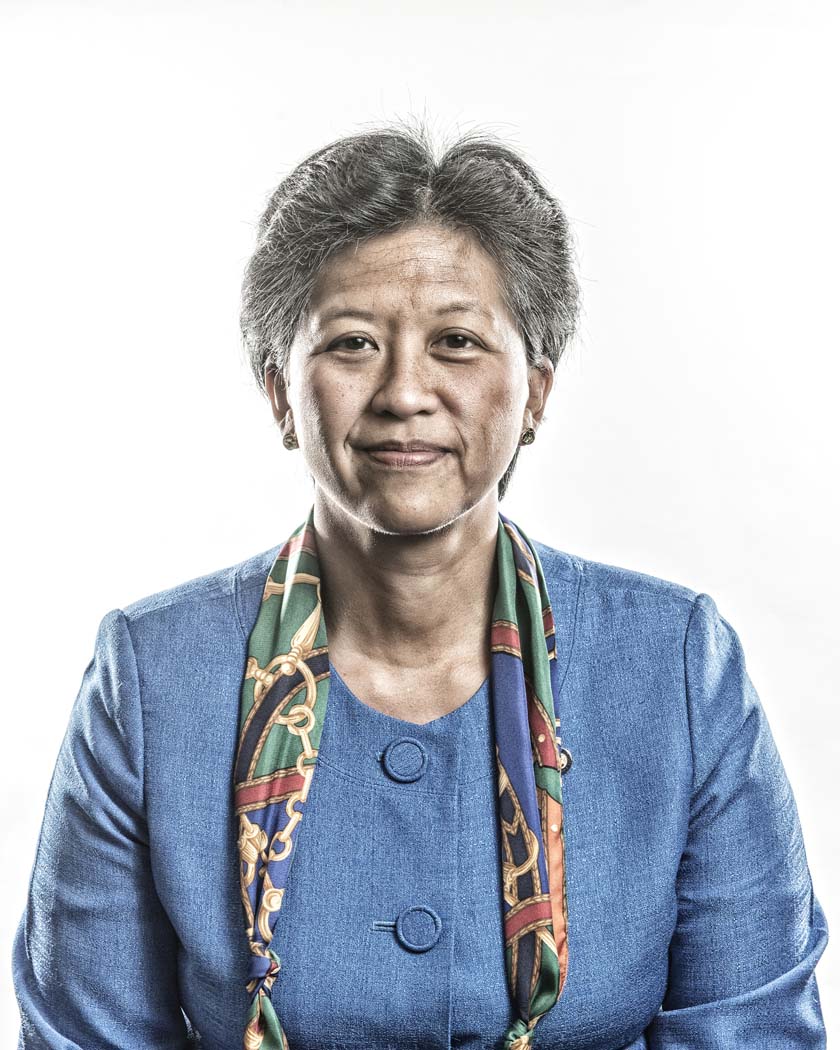
US Air Force Colonel Inez Sookmai (ret.) poses for a portrait at the Advocate Magazine photo studio in Dallas, TX on Sept. 29, 2015. Sookmai, who was raised in East Dallas, oversaw asset distribution for the Air Force in Afghanistan. Photo by Danny Fulgencio
Col. Inez Sookma was born and reared in Lakewood, a graduate of Woodrow Wilson High School, but her parents came here from Thailand.
“As we grew up, our parents told us, ‘You’re going to be all-American children. You can learn to speak Thai later. You can eat Thai later,’” Sookma explains. “So we grew up eating hotdogs and hamburgers. They even wanted us to have an American religion. To this day they’re still Buddhists, but we went to church with our sponsors at Lakewood Baptist Church. They were just proud to be here.”
Her parents were caught off guard when Sookma joined ROTC as a freshman at Texas A&M, but they weren’t hard to convince.
“I think it was a calling,” she says. “From there I was motivated to pursue a contract with the Air Force, and I thought four years, that was it. Just four years.”
Fast-forward to today and Sookma tears up when she reflects on her 27 years of service in the United States Air Force. She retired in 2014 as a colonel after an adventure that took her everywhere from the states to Europe to the Middle East.
“I just kept getting these amazing opportunities,” she explains. “I can never really say I have one particular tour or assignment that was my favorite. I learned from each one.”
Her early years were spent learning in the classroom and the field, where she established herself as an expert in transportation.
Sookma lived in the Philippines running a passenger terminal at Fort Clark Air Base. Later, she moved to the Wright-Patterson Air Force Base in Dayton, Ohio, so she could earn a master’s degree.
From there she relocated to England to operate a supply warehouse and had additional assignments that took her to Italy, Alabama and, her favorite, Hawaii.
She was then transferred to Germany and put in charge of all the transportation at Spangdahlem Air Base.
Within a year, Sookma was overseeing the critical departments of transportation, planning, supply and maintenance — a “jack of all trades and master of none” kind of position, she explains. “I was glad I had the experience I had because they picked me to stay and run the squadron, which was now twice as big.”
Shortly after she took that position, 9/11 happened and “all hell broke loose,” she says. “But it made me realize how important it was to have all the logistics under one umbrella. The whole world stopped basically, and we were taking care of all those things.”
Her experience in Germany landed her a job at the Pentagon, where she was able to share what she’d learned and help shape logistical procedures in the Air Force.
“That was an eye-opener,” she says. “It was my first tour in D.C., and I enjoyed working in the Pentagon. It was fascinating, and I got to see the bigger picture of the Air Force.”
Of course working in the Pentagon was an experience in and of itself.
“There aren’t any windows in there,” she explains. “It’s like a self-enclosed city underneath the ground. The subway runs right into it, and inside there’s everything you need. Everyone had ‘The Pentagon Look.’ It just drained the life out of people. They’d walk out of the building just looking down, and get straight on the train. Everyone was very stressed.”
(She also volunteered to be the school mascot and run around in a tiger suit.
“I couldn’t tell anyone, so all my friends thought I was a nerd who never went to the games because I told them I had to study,” she laughs. “I tried to do fun things because I didn’t want to get so immersed in work that that was all I did.”)
The hard work paid off when she got orders to go to NATO headquarters in Brussels for a three-year tour.
“I learned a lot about how the different countries interact,” she says.
That was also where she achieved her most important bucket list item: she was promoted to colonel in 2008 and pinned in 2009.
Despite a myriad of military duties, she had never been deployed. She volunteered for a tour in Kabul, Afghanistan, where she advised the Afghanistan National Army and Police in how to create and sustain a national logistics system.
“So it was staying within my career field but taking it to another culture,” she says. “So the government put all my stuff into storage in the states, and I took off with my backpack and three duffle bags and headed to Afghanistan. It was fascinating.”
Her time at NATO included an effort to get more helicopters into Afghanistan, and being in Kabul confirmed the need. “I got to see it firsthand,” she says. “It was like a continuation of what I’d been doing, but from a new perspective.”
Her time in Afghanistan was the biggest culture shock she experienced during her time in the Air Force. (Yes, even more than Alabama.)
“It was so third-world country,” she says. “I don’t know how else to describe it. We’d hear bombs going off in the distance.”
But she’d learned some valuable lessons while working at NATO about foreign relations that she was able to apply to her work in Kabul. For example, she “always took time to have tea and small talk,” she explains. “We went out every day into the Afghan community and drank tea with them and built up that trust. They’re very nice people.”
Being a female officer in Afghanistan came with its own set of challenges. “There were two things I always had to plan ahead for: bathrooms and my hair,” she says. “They don’t have bathrooms for women, so they would have to set aside a bathroom that I could go into.”
When she got back to the United States a year later, she was in for a pop culture shock.
“I just remember Michael Jackson had just died, and it was like there was nothing else going on in the world,” she recalls.
She went back to the National Defense University, but this time to teach. Then last year she was selected for early retirement, so she moved home to Dallas to be close to her family.
“I look at everything as a bunch of little pockets, but faith and family have always been the underlying themes,” she says, as her eyes well up with tears.
“It makes me get all teary because it’s been fun. It was hard at first when they told me I had to retire. I was like, ‘I don’t want to retire because I’m having too much fun.’ But at least I have my family to go back to.”
Of course she hasn’t slowed down much since being back in Dallas. She’s been volunteering wherever she can, including working with the alumni association at Woodrow Wilson High School as the communications officer.
“Since I’ve come back to Dallas I’ve said I am going to go back and help all the organizations that helped me,” she says.
Mark DeCardenas
U.S. Army
Vietnam
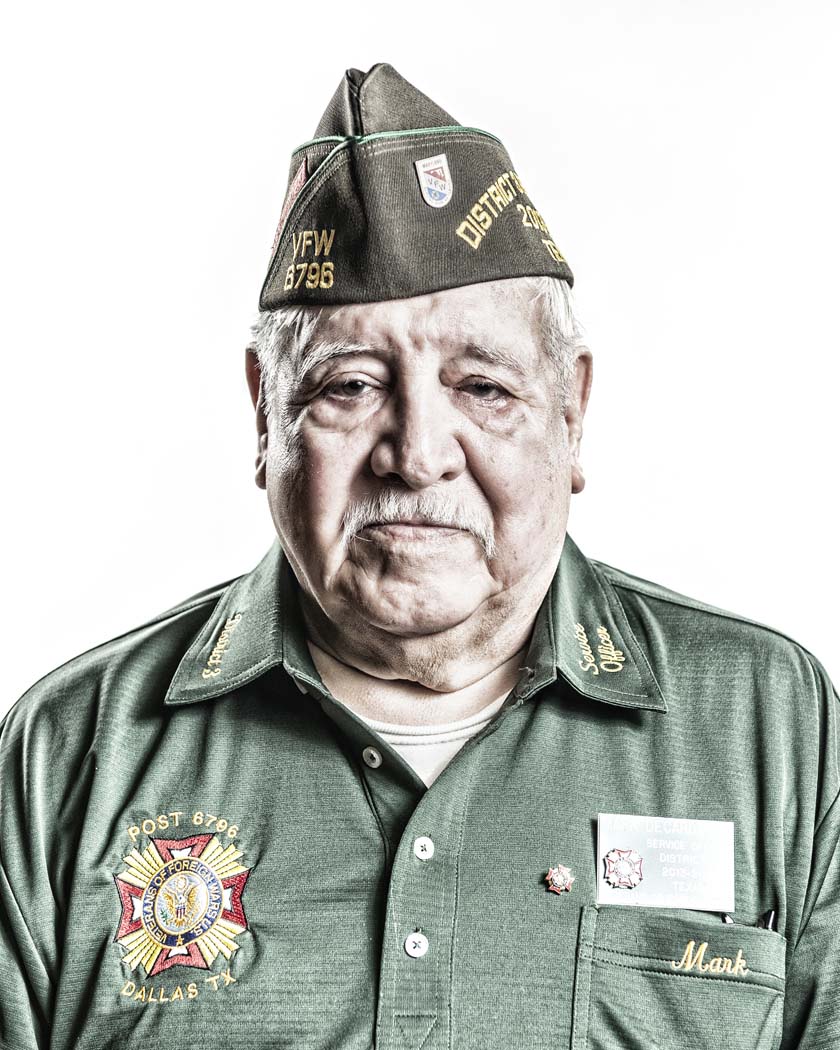
East Dallas resident Mark De Cardenas poses for a portrait at VFW Post 6796 in Dallas, TX on Sept. 29, 2015. In 1967, De Cardenas was drafted into the Army, where he served as a combat medic in the 101st Airborne Division, Echo Company, 2/501. He said that upon leaving Vietnam, he stripped off his uniform, changed into civilian clothes and never looked back. He later had five grandchildren and worked as an active member for the Veterans of Foreign Wars. Photo by Danny Fulgencio
In 1967 neighbor Mark DeCardenas received a letter saying he’d been selected for service, making him one of 648,500 Americans drafted into the Vietnam War.
They called him in for a physical.
“By the end of the day, I was being sworn into the Army,” DeCardenas says.
He went to basic training at Fort Sam Houston in San Antonio. He took an aptitude test and scored high, so they told him he was going to train as a medic. He was assigned to the Illinois National Guard in Springfield, and he hoped that meant he wouldn’t be sent to Vietnam.
Then he got another letter.
He was sent to a field hospital in Saigon, Vietnam, at Tan Son Nhut Air Base. When he arrived, he began jungle warfare training, where, among other lessons, he learned to spot booby traps.
“There were hand grenades hooked to trees, and they had white phosphorus inside,” he explains. “White phosphorus is like rock salt, and if it touches your body it starts burning the flesh immediately. Or [Vietnamese soldiers] would take a bamboo stick and take a nail with a projectile on top of it. So when you’re walking on a trail, if you stepped on that, it’d push it into the ground and that nail would make it blow your foot off. A week of jungle warfare training, and they thought we were ready to go.”
He flew to Da Nang, Vietnam, with the 101st Airborne Division, and any hopes he had of avoiding heavy combat were dashed.
“All the dead bodies went to Da Nang,” DeCardenas explains. “We landed, and we were going farther north. There were probably about 100 of us, and when we got off it was raining. It was in the middle of the night, and they said, ‘Sit your duffle bags down. There are 200 body bags over here.’ So we loaded the bodies back into the plane, and then we went to the hanger to spend the night. So that was my welcome to the front lines.”
Firefights became routine, taking place up to six or seven times a day.
“We ran so many different missions,” he says. “We always took a lot of incoming mortar rounds, but the firefights you didn’t know when they would happen. The Viet Cong mostly stayed in these huge things underground.”
The United States soldiers called in airstikes to throw down Napalm, a highly flammable liquid, that would fall into the underground spaces and drive out the Vietnamese soldiers.
But it wasn’t all bad. DeCardenas also has memories of Vietnam that make him smile.
“When we got to Da Nang, they gave us some boxes of chocolates,” he says. “But these were left over from the Korean War, probably, because there were little Hershey bars in them that were white because they were so old. So we decided to throw them to the little Vietnamese kids that were along the road. But as soon as we’d throw them to the kids, they’d throw them back at us because they knew it was old candy, and they didn’t want it.”
For the second half of his service, DeCardenas left the 101st Airborne Division and became a medical adviser for Military Assistance Command, Vietnam [MACV]. “Medics could only stay in the field for six months,” he explains. So he spent the remainder of his tour of duty with a group of Australian soldiers who drank like they “had hollow legs” and played Poker every night, he says.
After being honorably discharged, DeCardenas returned to East Dallas, near his roots. He grew up by White Rock Lake, a graduate of Woodrow Wilson High School. After working for 13 years in the grocery business, a friend encouraged him to get involved in the John Franklin Sprague VFW [Veterans of Foreign Wars] in East Dallas. The people he met there quickly became his close friends.
“I could just sit down and talk with them,” he says. “We all had something in common. We’ve all been in a war or a conflict, and that’s our bond. I just love [the VFW]. It gives me a place to come every morning.”
The VFW, which is a national organization that works to secure rights and benefits for military veterans, proved so valuable for DeCardenas that he took on a leadership role as a service officer. So when neighbors call the John Franklin Sprague VFW that’s located on Garland Road, they’ll more than likely be directed to talk with DeCardenas.
He helps veterans and their families with a range of needs, from advocating for veterans who’ve been wounded or who suffer from PTSD, to helping families prepare military funerals.
“If I hadn’t gone to Vietnam, then I wouldn’t have the opportunity to be here,” he says.
Joe Applewhite
U.S. Army
Korea
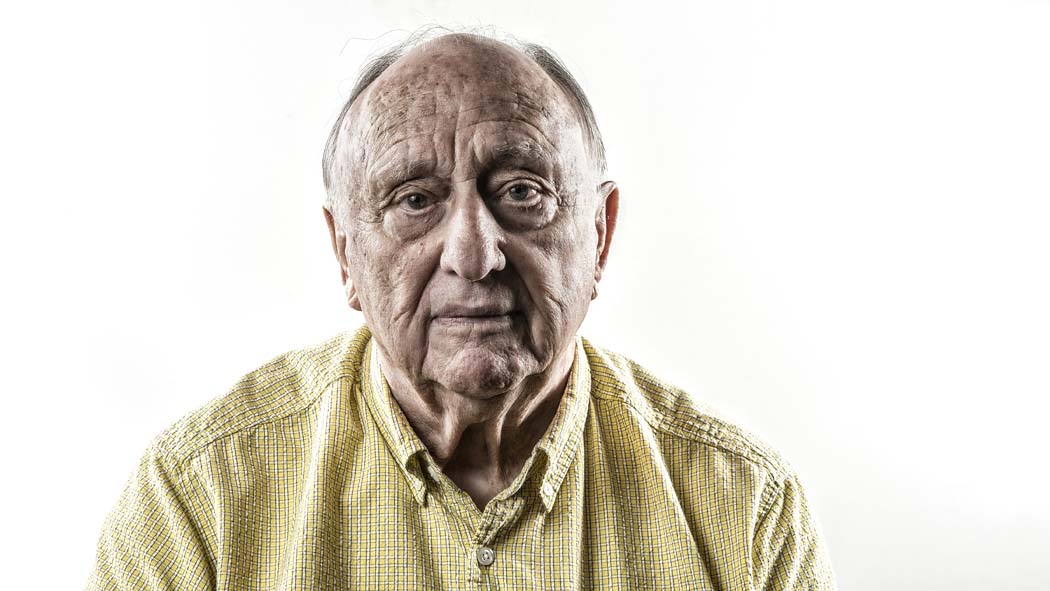
Joe Applewhite poses for a portrait at CC Young Retirement Community in Dallas, TX on Sept. 30, 2015. In 1951, Applewhite served in the US Army as a First Lieutenant during the Korean War. As a forward observer for an artillery unit, he was later awarded a Bronze Star for his actions in combat. Photo by Danny Fulgencio
Joe Applewhite, who lives at C. C. Young retirement community in East Dallas with his wife, Mary Beth, was a farm boy from Mississippi who’d never been out of the country when he joined the Army.
He’d already seen the Great Depression and World War II as a boy, but it was his time in Korea as a young man that gave him a new take on life and death.
“You become aware of what’s really important when you’re facing death,” he explains. “When you’re in a position where you don’t know if you’re going to live past tomorrow or not, you live differently than if you think you’re going to live for 30 more years. It gives you a totally different perspective.”
Although there are a few moments that stand out in his mind as having come especially close to death, every day was a risk.
Applewhite was a first lieutenant who served as a recon (“reconnaissance” is a military term for gathering information) and field artillery officer, and later as a field artillery forward observer. In both cases, he spent his days as close to enemy lines as possible.
The opposing sides — North Korea, which was backed by China, and South Korea backed by the United States — were pressed against the Korean Demilitarized Zone (DMZ), which runs along the Han River right at 38th parallel north.
His job was to communicate between the artillery and infantry, so when the infantry made plans to cross the river at night to capture Chinese soldiers and interrogate them, he made sure the ambush patrols were protected in case of a firefight.
“We were as far forward as you could get because you had to be able to see,” he says.
Being that close to enemy lines meant dodging bullets was a daily occurrence.
“You begin to do things without thinking about it,” he explains. “We had this observation hole where you could see out the front. It had a cover on it, and one day I was having trouble seeing, so I got up on top to have a look around. My buddy says, ‘What are you doing up there, fool? You’re getting ready to get shot.’ So I hopped back down, and sure enough a whole blast of machine fire came across there.”
Applewhite was particularly fascinated by the psychological warfare the Chinese employed. Both the Chinese and the Americans used fliers to send messages to the other side, but they took very different approaches, he remembers.
“It was totally different psychology. They were trying to get our morale down. They were working on our minds all the time.”
Applewhite’s division worked closely with the 65th Infantry Division from Puerto Rico, who he claims were “very nervous people” who made “excellent soldiers.”
“Because if they heard something they’d shoot at it or throw a hand grenade at it,” he recalls. “It was not uncommon to find a dead man on the wire out there the next morning.”
One day Applewhite went out with a team to scout for a new location. While driving along they discovered a road that wasn’t clearly marked on their map, so they decided to check it out.
“We drove about a quarter of a mile, and there was a clearing. There was a big farmhouse because it had been someone’s farm, although no one was there then,” he remembers. “We looked around and something told me, ‘You know, we might not ought to be here.’ So we left.”
The next day a platoon was ambushed in that exact clearing, and everyone was killed, Applewhite says. All these years he’s felt lucky.
“Luckily something told me to get out of there, and I did,” he concludes.
He learned a lot in Korea, he says, particularly about leadership, priorities and understanding people.
“It was educational for me to know how the world is.”
Gilbert Clift
U.S. Army
World War II
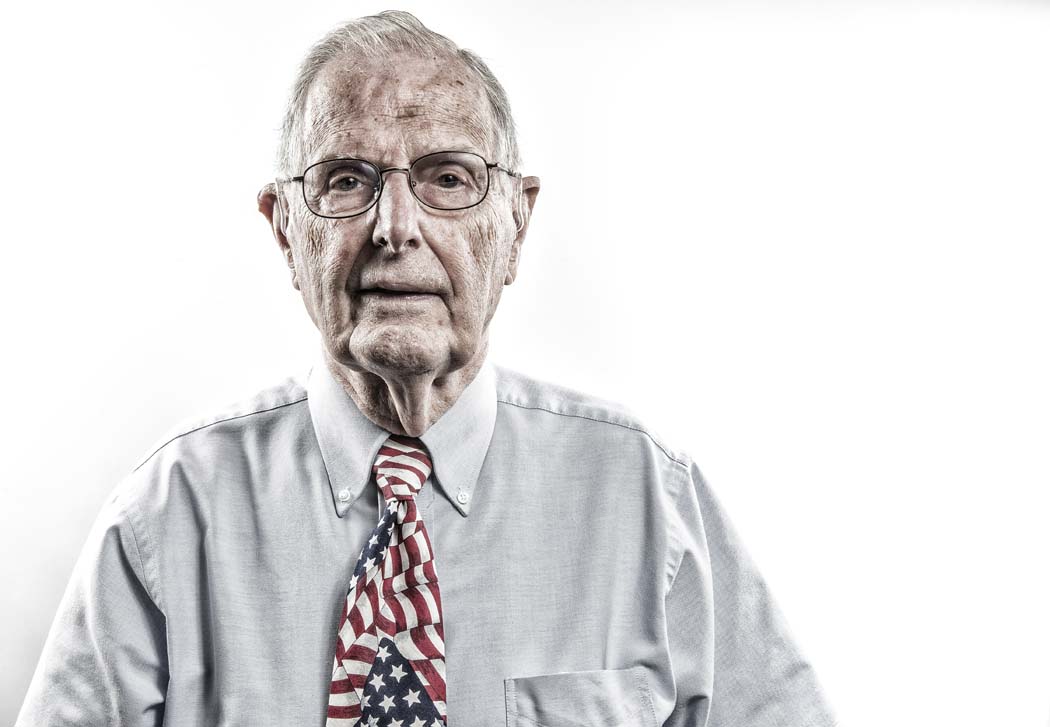
Gilbert Clift poses for a portrait at CC Young Retirement Community in Dallas, TX on Sept. 30, 2015. Clift served in the US Army in Europe during WWII. He fought in the Battle of the Bulge, where he was captured by Nazi forces and held as a prisoner of war until April 15, 1945. Clift said that, after having been living in a frozen hole for a month during the Bulge, being a prisoner of war in a warm makeshift prison was unexpectedly pleasant. Photo by Danny Fulgencio
Gilbert Clift, a resident at C. C. Young retirement community in East Dallas, should have been storming the beaches of Normandy on June 6, 1944, when more than 130,000 Allies (which rose to 1 million by the end of the week) flooded into Western Europe.
But Clift was in a hospital in Paris, Texas, due to a training exercise gone terribly wrong.
During a live exercise at Camp Maxie, a mortar round fell short, killed one man and put a dozen others in the hospital, including Clift, who was injured by shrapnel that went through his boot and into his foot, where it remains to this day.
“No Purple Heart,” Clift says. “Training accidents don’t count.”
Although today he’s both anti-war and anti-gun, Clift believes World War II “was necessary, with Hitler being like he was,” he says. So as a freshman at Oklahoma A&M, Clift enlisted in the Army Reserve with the goal of taking ROTC and serving as a second lieutenant after he graduated with his engineering degree. However, the reserves were called up two weeks before the end of Clift’s freshman year.
He trained at Fort Sill in Oklahoma and then Camp Maxie, where the accident occurred. It took him out of field training for six weeks, but in September of 1944 he sailed to Britain. From there his division made its way through France and into Belgium, straight to the front lines.
“At the front line, in the trees, we could see across an open field to pill boxes and concrete tank traps,” he says. “This was my first view of where the enemy was.”
At times they’d see the German soldiers emerge from their shelters to play in the snow. Although they were instructed not to shoot at the soldiers, one of Clift’s buddies decided to see if he could hit one. He didn’t, but soon afterwards the German soldiers launched three artillery shells back at them.
“This was my first indication that this was just a game, and there were rules to be followed,” Clift recalls.
Most of the action happened when the night patrols crossed the field in an attempt to gather information, Clift explains. Because Clift wore glasses that reflected the light and had a tendency to cough frequently, he was never selected for that job.
“Lucky me,” he quips. “I was real lucky during the war.”
Although not lucky enough to miss the infamous Battle of the Bulge — the Third Reich’s last ditch effort to eject Allied forces from Europe, resulting in about 90,000 American casualties.
“You couldn’t tell which way the shells were going,” Clift remembers. “So I assumed we were shelling the Germans. I didn’t know they were shelling us.”
“The Germans were throwing concussion grenades at my position that sooner or later would get close to me,” he realized. “I thought of the only phrase I could recall in German and hollered out, ‘helfen sie mir!’” — help me.
“That was the end of my soldiering,” he says. “They removed my helmet, an indication that I was out of the game.”
They took him east into Germany and interrogated him in a farmhouse, although he claims they knew more about his outfit than he did. He traveled with them a little ways farther, and although food was scarce Clift insists he was in better shape as a prisoner of war than a soldier.
“At least I wasn’t getting shot at,” he points out.
Eventually they put him in a boxcar and sent him to Stalag 4B, a prison camp near Mahlberg, that contained more than 10,000 British soldiers, but he soon volunteered for a work detail that allowed him to leave the camp.
They sent him to Torgau, Germany, where he and other volunteers loaded barrels and filled craters left by bombs. They made their way into Zeitz to fill more craters, spending their nights in an old monastery in Moritzburg.
On Easter Sunday in 1945, they were allowed to take a shower and “get some sun in a grassy courtyard within the walls of the monastery,” he remembers.
“We knew something was afoot for this kind of treatment. Sure enough, on Friday the 13th of April, we walked from our room and headed west. We were walking to freedom, and our elderly guard… was hoping to be captured by American troops instead of Russian troops.”
Along the way, however, an American P-47 dropped a bomb on a nearby schoolhouse. Clift tried to take shelter under a wagon, but there was no way to hide from the debris of the blast. A piece of shrapnel sliced through his right side, just above the belt. With a makeshift bandage, he kept walking.
Two days later on April 15, an American tank liberated them and took the Germans captive.
Clift and the other now-freed POWs continued to the next town where they found a chow line and beds to sleep in. The next morning he went to a hospital, where they diagnosed him with malnutrition due to his dramatic drop in weight from 140 to 110 pounds.
They also looked at his wound and determined he’d get that Purple Heart after all. But more importantly, he got to go home.





